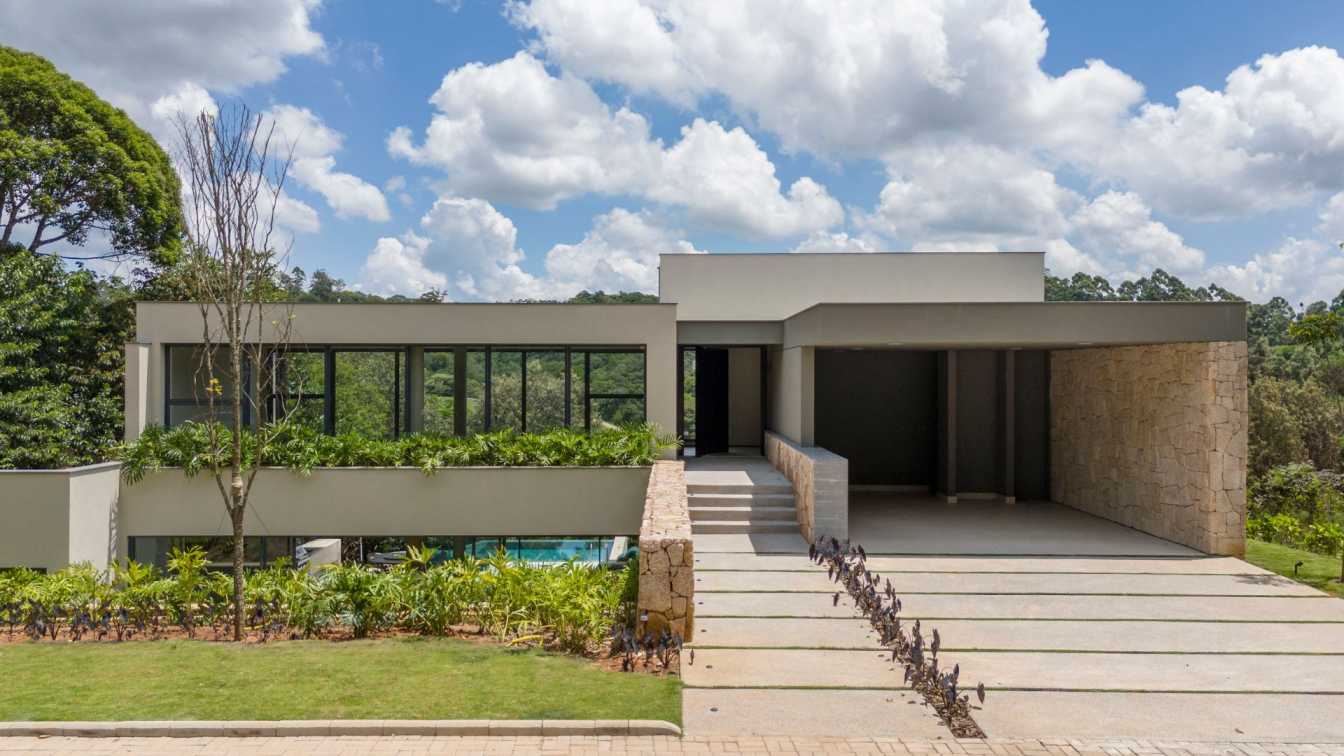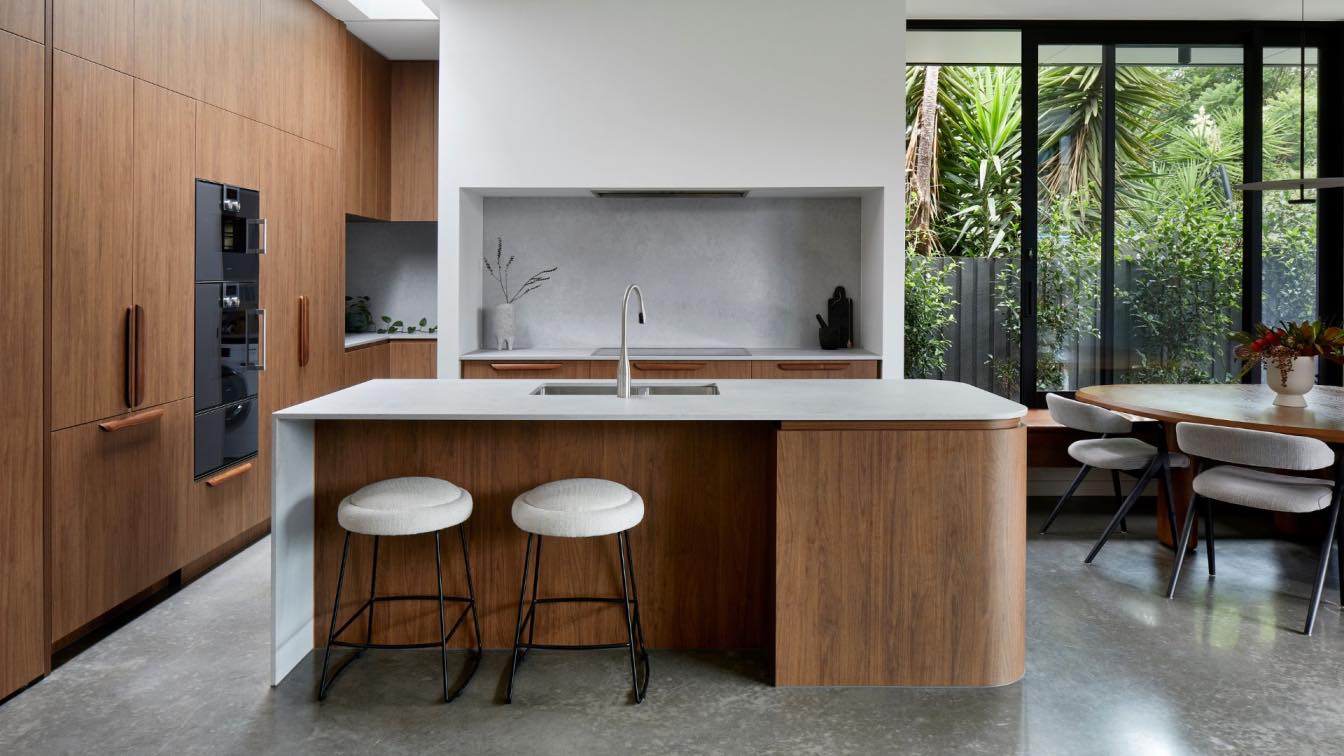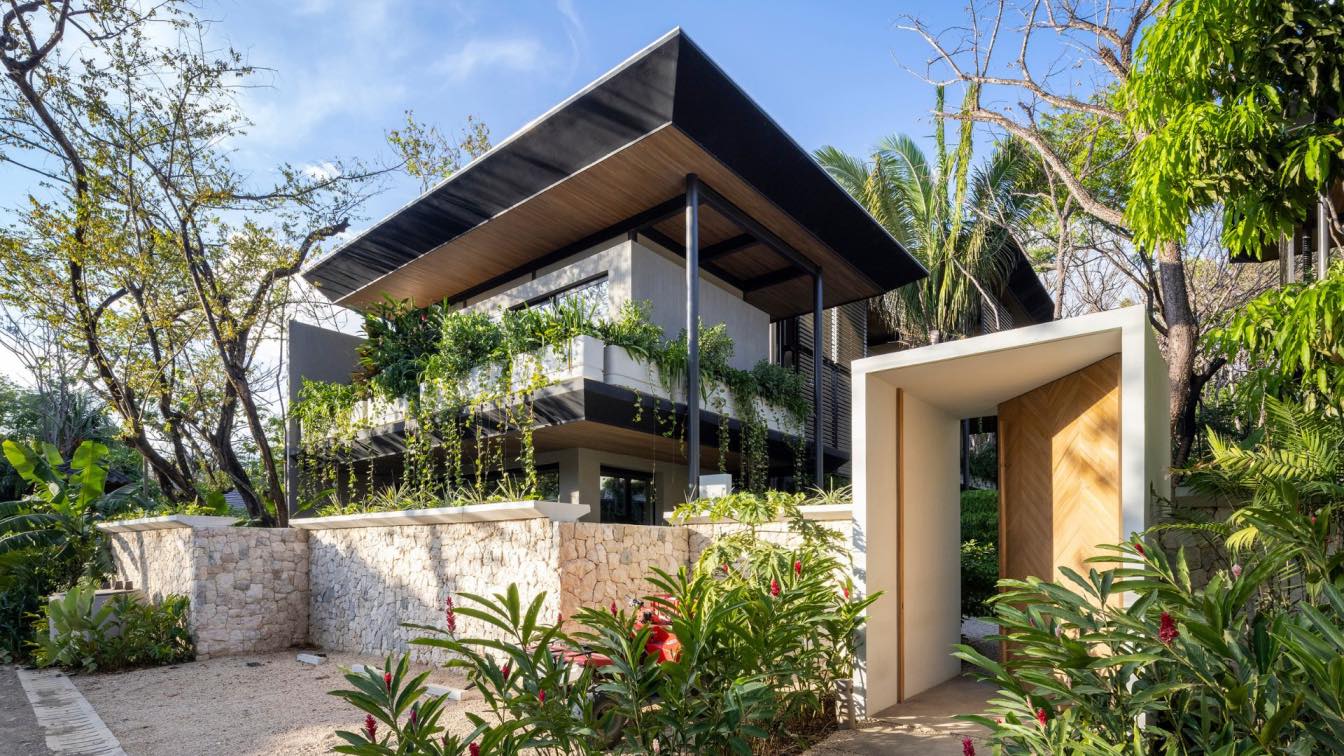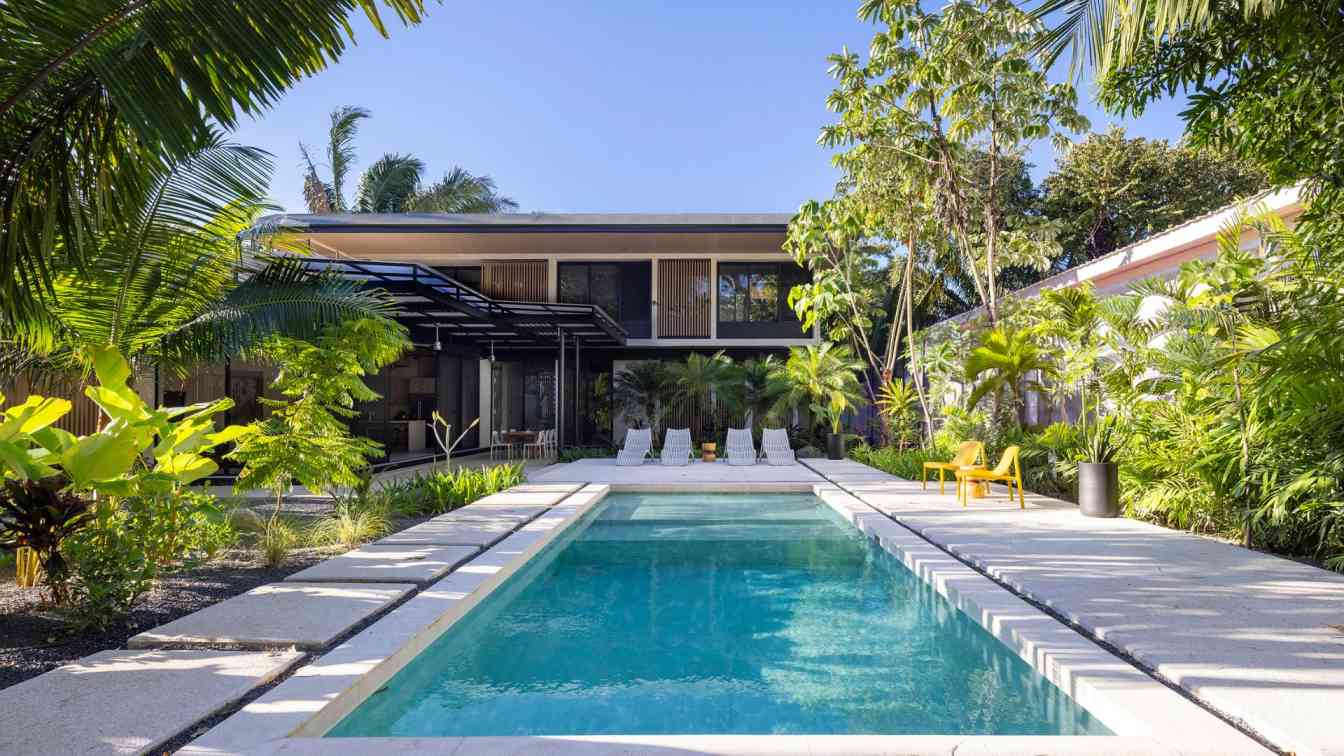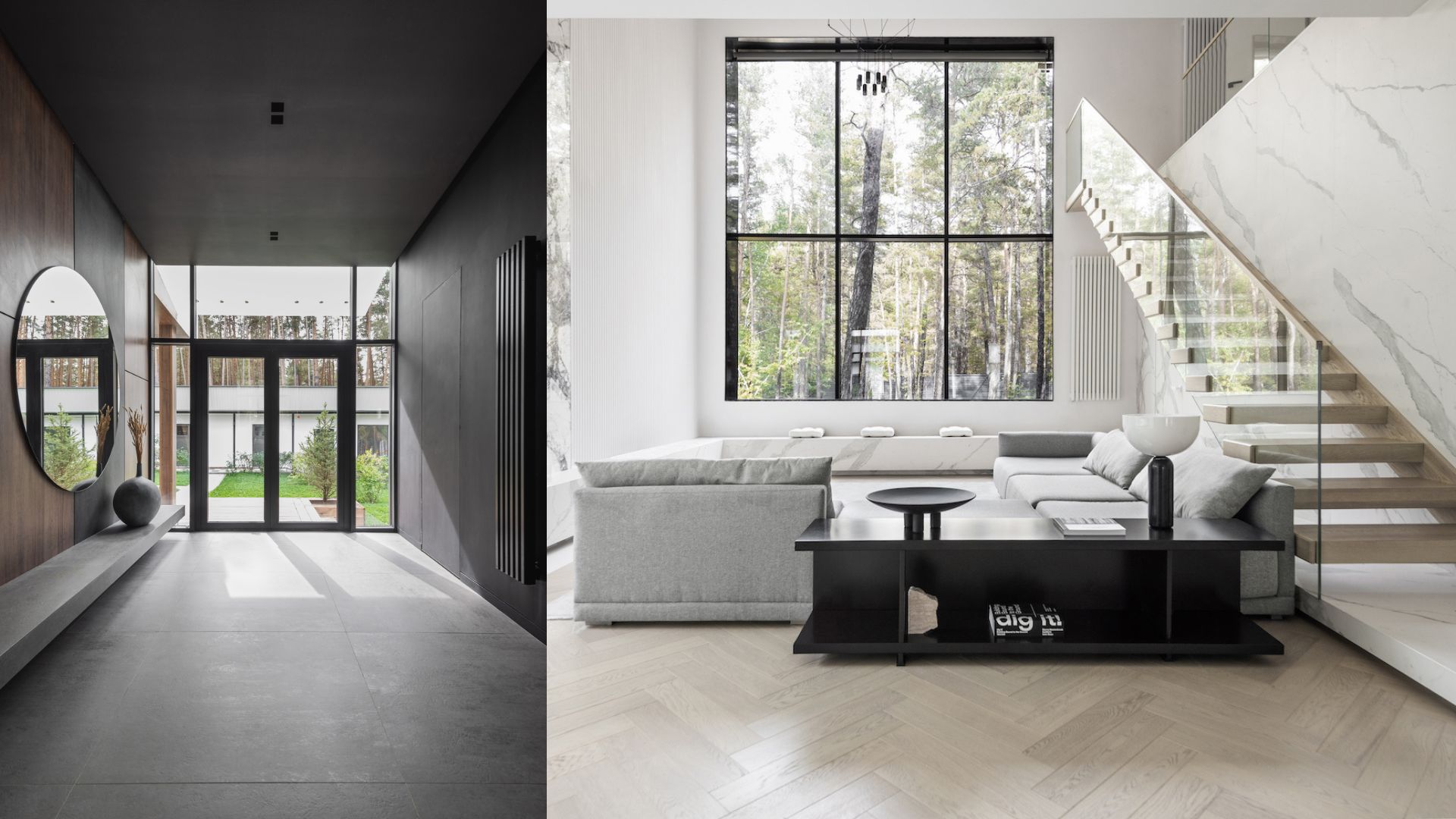The project, signed by Cité Arquitetura, provides a cozy and intimate space in perfect harmony with the surrounding landscape. About an hour from São Paulo, Japan House (Casa Japão) is a refuge for creating and reliving memories. Located in a gated community with large expanses of preserved forest, the project, developed by Cité Arquitetura, was designed to take advantage of the steep slope of the land, creating a gradation of intimacy between its rooms.
Seen from the street, Japan House overlooks the landscape in a discreet way, allowing the eye to pass through the residence and respecting the low density of the building in relation to the countryside, giving prominence to the sky and the Sea of Hills. Its access suggests a single- level, transparent house and, as you enter the rooms, a succession of different scale relationships surprises you, gradually revealing the residence.
Designed for a couple and two children, the 524.33 m² houses a program for the main and expanded family nucleus, as well as leisure spaces typical of a retreat. The residence is divided into three floors, which distribute the uses along levels adapted to the topography in an L-shaped layout, designed with the surroundings in mind: the most opaque façade faces the only side with neighbors, removing the need for walls, in counterpoint to the transparency in constant relation with the sinuous horizon of the internal façades.
The contrast between full and empty, using different ceiling heights and light fenestrations, runs throughout the project, accentuating the view of the hills and surrounding vegetation, guaranteeing a welcoming air throughout the house. This sensitive relationship with the entrance of the sun, the projection of shade and the threshold between inside and outside is the result of the residents' desire to incorporate sensations and ambiences experienced in Japan, where they lived for many years before returning to Brazil.

Very applicable to architecture, in Japanese culture there is the concept of Ma, which can be interpreted as “between”, an empty space where life is created. Written in kanji by combining the symbols for door (門) and sun (日), Ma (間) is the space in which the emptiness of architecture should be thought of from the natural qualities that embrace it, inspiring the search for a house that exists, first, from the sensations aroused by its surroundings, without surface artifice.
Based on this precept, the house was designed with the sensations guiding the form, thinking of the different environmental qualities accordingly. With the intimate spaces, such as bedrooms and offices, running along the side of the plot, the less private volume was designed parallel to the street. Starting from the scale of the pedestrian at the entrance to the residence, the living room is the apex of the application of the idea of “space between”, with a double height of 6 meters that causes surprise to those who from the street believe they can see the completeness of the construction. With a spatial and visual crossing between the exterior and interior, the room acts as both a balcony and a living room.
This spatial care is repeated at other times, always maintaining cross-ventilation and natural lighting throughout the residence. In the circulation area, light penetration slots in the form of arrowheads discreetly reveal the landscape, increasing the impact of the large balconies and windows in the bedrooms by contrast and ensuring the constant passage of air. In the kitchen, which adjoins the living room, the lower ceiling brings the monumentality of the double-height ceiling to the scale of the body and nestles the room by working together with other elements such as the overhanging slab of the deck and the hanging planter on the front façade.
The cladding continues to emphasize the play of light and the landscape, using neutral colors and filtering elements, such as the fixed and slatted brises, which relate to both Japanese architecture, with translucent shoji doors, and Brazilian architecture, with cobogós and brises-soleil. Strengthening the Japanese spatial reference, these same façade elements appear using carbonized wood treated with the Shou Sugi Ban technique. Existing in ancient constructions, the technique of burning the surface of the wood extends the useful life of the material.


































About Cité Arquitetura
Cité Arquitetura, founded by architects Celso Rayol, president of AsBEA-RJ from 2019 to 2022, professor and postgraduate at PUC-Rio, and Fernando Costa, current advisor to Ademi-RJ and postgraduate at FGV, was founded in the city of Rio de Janeiro in 2012. With a multidisciplinary team prepared to design in different scales and programs, the main goal of the firm's projects is to bring about a relationship of exchange with the surroundings, either through the presence of nature and the landscape, or through dialogue with neighborhood life and the daily life of the streets. Some of their celebrated works include Sorocaba 112, one of Cité's first, and the modernization of the JK Memorial in Brasilia, nominated for Building of the Year in 2017 by Archdaily international; Borges 3647, winner of the AsBEA/RJ Award in 2017, part of the Projeto magazine yearbook in 2020 and nominated for the Work of the Year Award 2022 in Archdaily Brazil; Miguel Couto, on the shortlist for the Domus Restoration and Conservation Award, an international award given by the University of Ferrara in Italy, and an honorable mention at the annual national ASBEA awards in 2018; o Complexo Multiuso, on Ilha do Fundão, awarded in the Professional category of the 2015 Saint Gobain Award; the Jardim Botafogo complex, winner of the Build Awards 2020 by the British BUILD Magazine; Partage Shopping Brasília, winner of the AsBEA-RJ 2022 Award; and the Bossa 107 and Ícono Parque buildings, nominated for Work of the Year 2023 by Archdaily Brasil. With its body of work, Cité was named Most Client-Focused Residential Architecture Studio by BUILD Magazine in 2021, won the Architect of the Year award by Destaques Ademi-RJ 2022 and had its story told in Monolito #53, joining the group of the country's great offices featured by the publisher.www.citearquitetura.com.br

